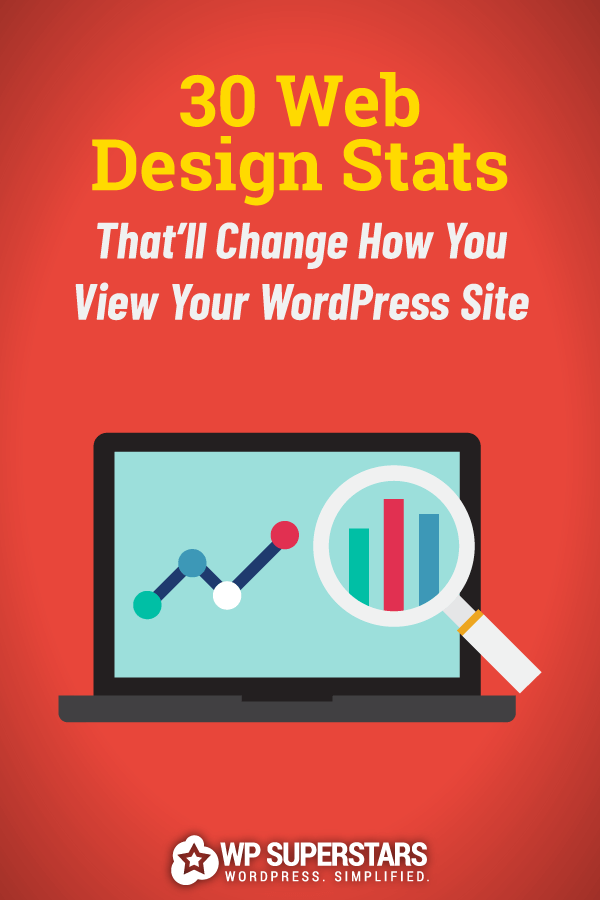Your website’s content and overall web design have a major impact on how successful you are.
After all, the content you publish needs to add value to people’s lives. And this will only happen if people read it.
And your site’s web design needs to attract people’s attention and engage them so they explore more of what you have to offer.
That’s why today, we’re going to share with you the best web design statistics, facts, and trends to inspire you to pay closer attention to the layout, color schemes, typography, and more on your WordPress website. So, let’s get started.
1. Beautiful is important
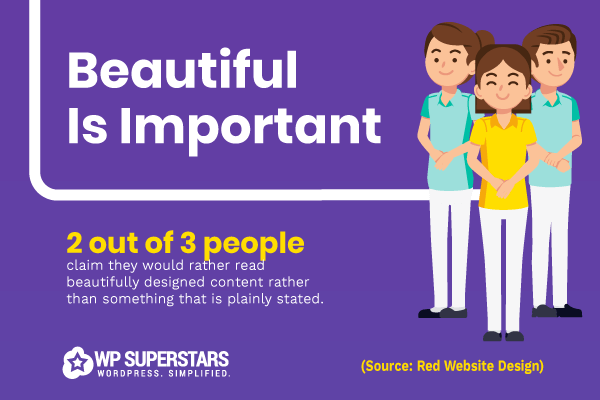
2 out of 3 people claim they would rather read beautifully designed content rather than something that is plainly stated. While experts suggest that web design isn’t everything, it’s important to note how critical web design is to your success.
2. Web design and credibility go hand in hand…kind of
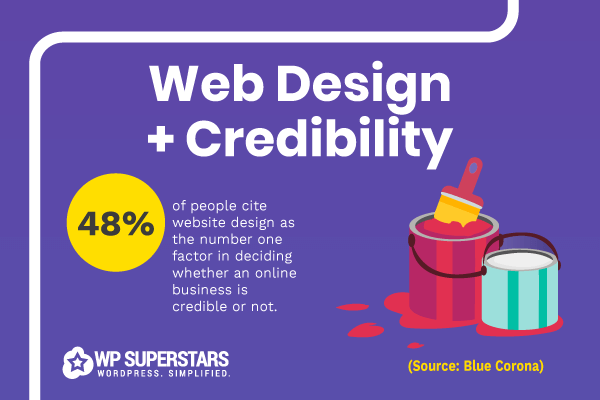
48% of people cite website design as the number one factor in deciding whether an online business is credible or not. Getting people to trust your brand, especially when just starting out, is crucial if you want long-lasting success and loyal customers. Adding to this, 94% of people claim that web design is the reason they rejected a website, regardless of what was being offered.
3. Mobile web design plays a role in engagement
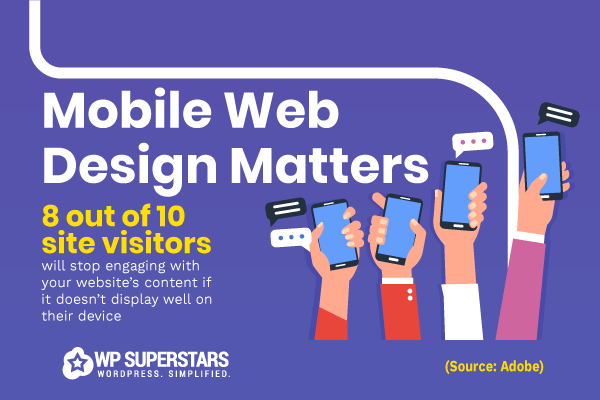
8 out of 10 site visitors will stop engaging with your website’s content if it doesn’t display well on their device. This means that your website must render seamlessly on desktops, tablets, laptops, and mobile devices.
4. Poor web design drives people away
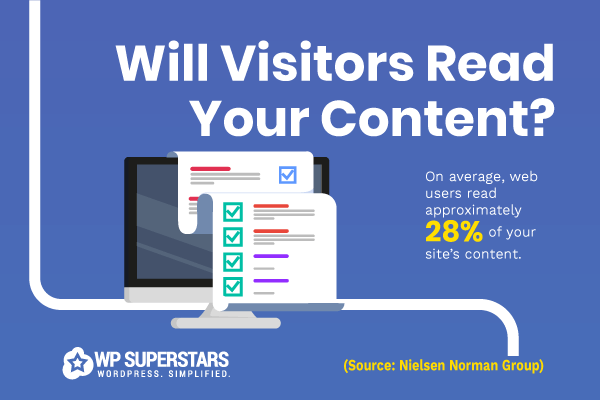
88% of online visitors and shoppers are less likely to return to a website after a bad experience. This means that leaving a lasting first impression, through the way you design your site elements and content, is important for boosting time on site metrics and overall engagement.
5. Site visitors don’t usually read a lot of content

On average, web users read approximately 28% of your site’s content. Though it’s more realistic to think that people only actually read about 20% of that valuable content you’ve worked so hard to publish. When you write something for your website, get to the point and make it count.
6. When people do read site content, it’s in an f-shape pattern
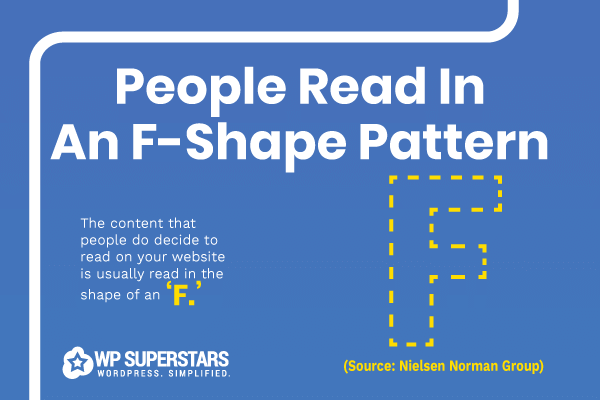
The content that people do decide to read on your website, especially when it comes to your site’s homepage, is usually read in the shape of an ‘F.’ When designing your site’s homepage, make sure the most important stuff (e.g., value proposition, call to action, and image) follows the pattern of people’s eyes. Why, you ask? Because the research tells you that you should.
7. Make your main image count
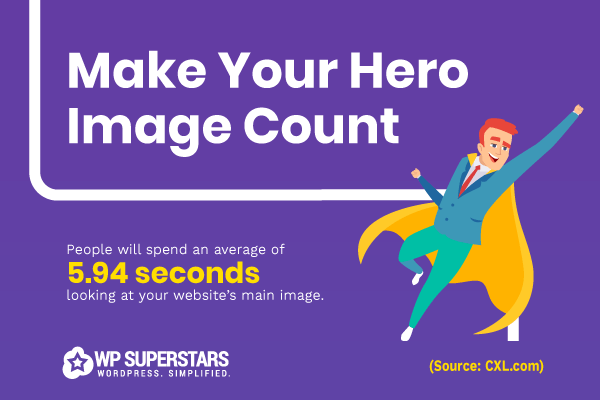
People will spend an average of 5.94 seconds looking at your website’s main image. Make sure it conveys your main message and is very relevant to what you have to offer site visitors.
8. Always have a call to action (CTA)

Did you know that 70% of small business websites lack a call to action button? Because of this, you should immediately set yourself apart from the competition by displaying a prominent and clear call to action button so people on your website know exactly what you want them to do and how to do it.
9. And don’t forget the contact info
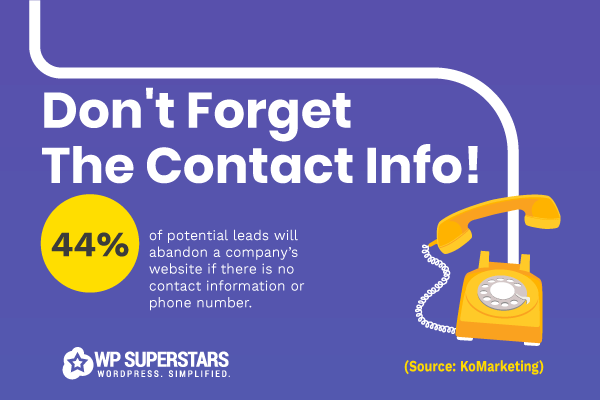
44% of potential leads will abandon a company’s website if there is no contact information or phone number. People want to trust they can get in touch with an online business with questions or concerns. Getting immediate answers will help their purchasing decisions and of course, your conversions.
10. Product and services pages are not an afterthought

47% of people that land on your eCommerce site will check out your products and services page before looking elsewhere. If they determine your don’t have what they’re looking for right away, they’ll leave without putting much thought into it. And you can bet they’ll be heading straight to your competition.
11. WordPress speed counts as web design
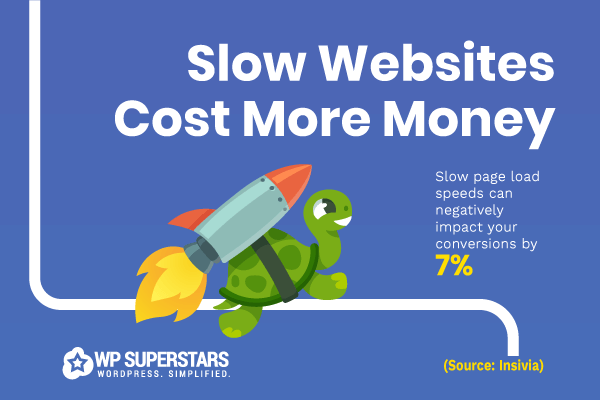
If you work to increase your site’s loading times, you can prevent the loss of 7% of possible conversions. This is part of that first impression your website’s layout and overall design have on site visitors, regardless of where they come from or why they’re there.
12. Who writes your content makes a difference
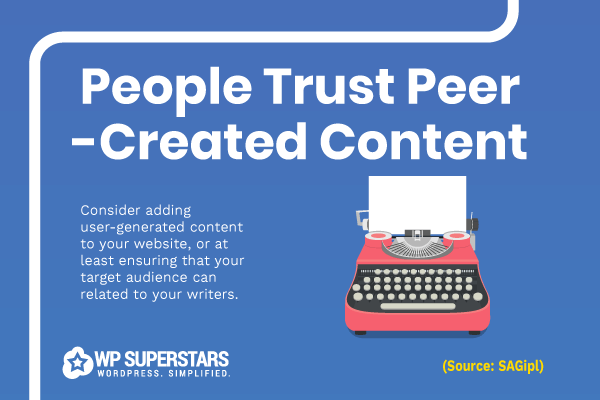
Peer-created content is trusted by people the most. Because of this, you might want to consider adding user-generated content to your website, or at the very least ensuring that your site’s content authors are relatable to your target audience, so people trust your brand and you can establish yourself as an authority in your industry.
13. Show your leads, followers, and loyal customers you care
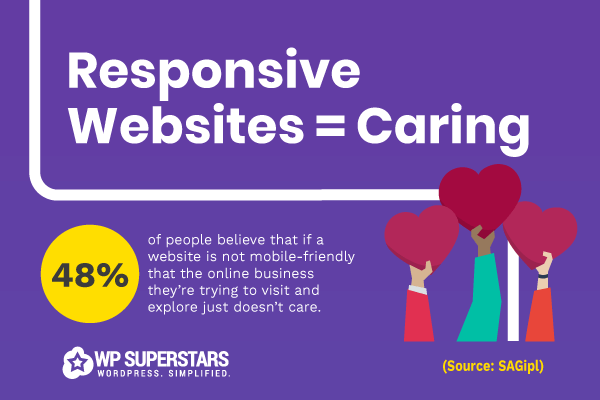
48% of people believe that if a website is not mobile-friendly that the online business they’re trying to visit and explore just doesn’t care. While this may not be the case, this is no excuse for losing out on follower or subscriber opportunities. Take the time to create a stunning website and ensure people believe you care about them as customers.
14. Crowded websites aren’t cool
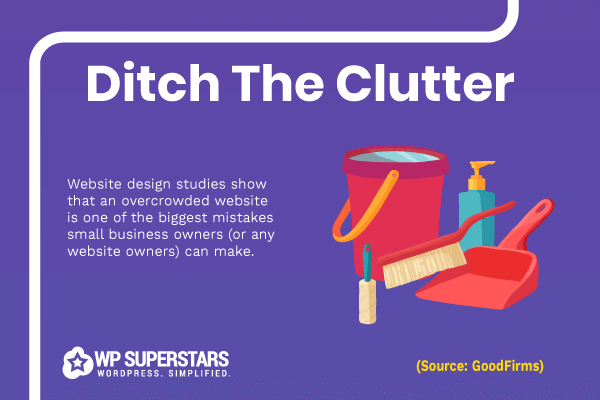
Website design studies show that an overcrowded website is one of the biggest mistakes small business owners (or any website owners) can make. Instead, you should aim for minimal web design and plenty of whitespace so you don’t overwhelm the senses and make navigating your site easier.
15. Online reviews should always be an element on your website
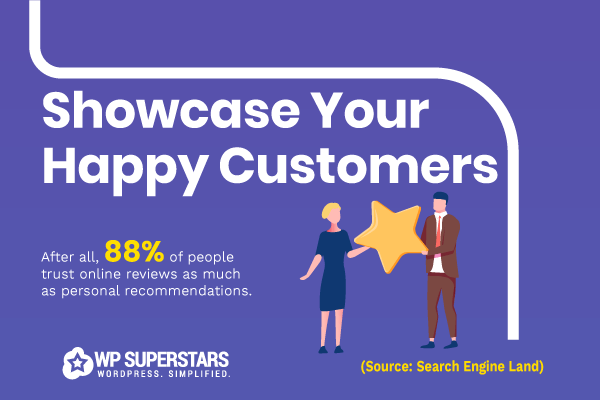
When it comes to designing the layout of your homepage, you should consider adding positive reviews of satisfied customers front and center. After all, 88% of people trust online reviews as much as personal recommendations. In fact, most people look online first when they set out to make any kind of purchase, whether it be to comparison shop or actually buy.
16. Want to stand out? Work on your site’s web design
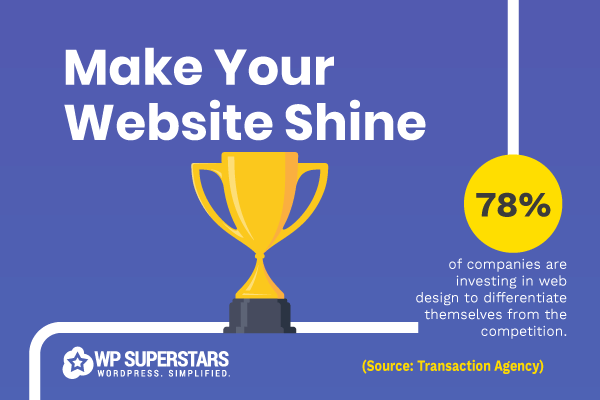
Standing out in the saturated digital world isn’t always easy. That’s why 78% of companies are proactively investing in web design to differentiate themselves from even the stiffest of competition.
17. Time is not on your side
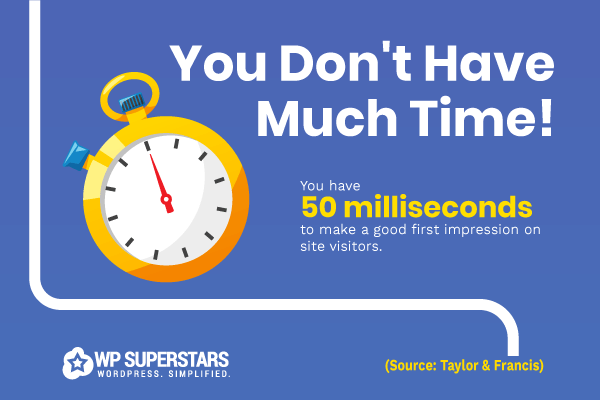
We talk a lot about increasing your site’s speed and performance. But there are other types of time that matter too. For example, you have 50 milliseconds to leave a good impression on site visitors. That’s not a lot of time is you ask us. But the truth is, people form opinions nearly instantly upon arriving on a website, and you need to be prepared for that.
18. You should rely on others to spread awareness about your brand
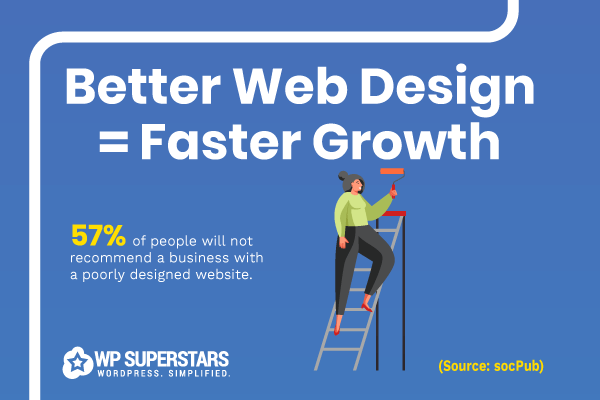
57% of people will not recommend a business with a poorly designed website. In other words, your site’s design can either work for you, or against you, when it comes to your success.
19. Responsive design is not a thing of the past
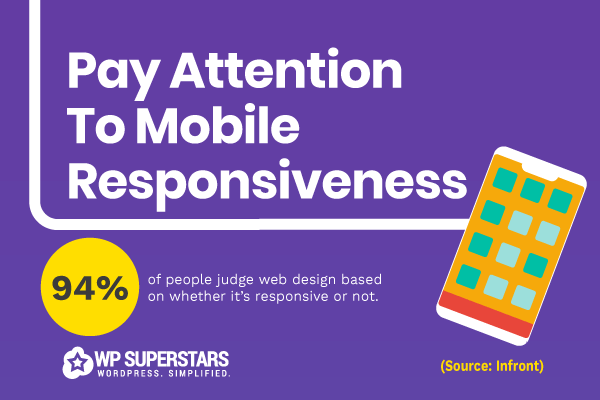
And it never will be. More users than ever access websites on multiple device types – desktops, laptops, tablets, and smartphones – and need to be able to view and navigate those sites with ease regardless. That’s why 94% of people judge web design based on whether it’s responsive or not.
20. Mobile design can actually boost sales
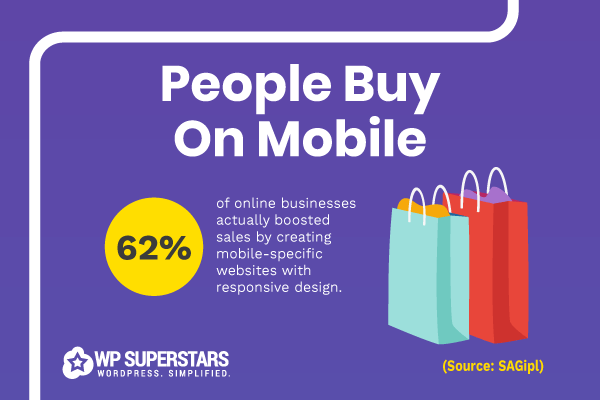
62% of online businesses actually boosted sales by creating mobile-specific websites with responsive design for customers and leads to frequent from their small devices.
21. Web design doesn’t stop at the checkout page
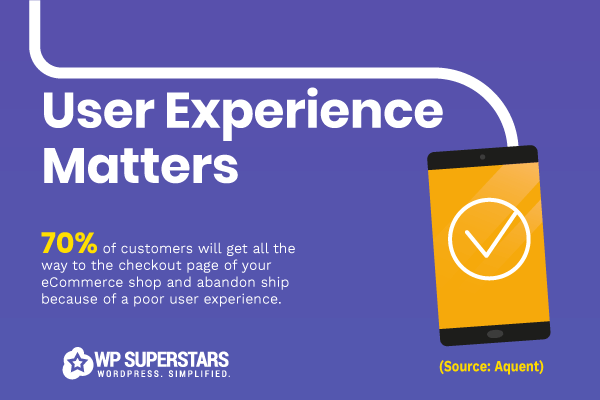
70% of customers will get all the way to the checkout page of your eCommerce shop and abandon ship because of a poor user experience. This means poor design and functionality, as well as slow load times, play a role in whether a person finalizes a purchase or not.
22. Advertisements and how they’re designed can lead to more revenue
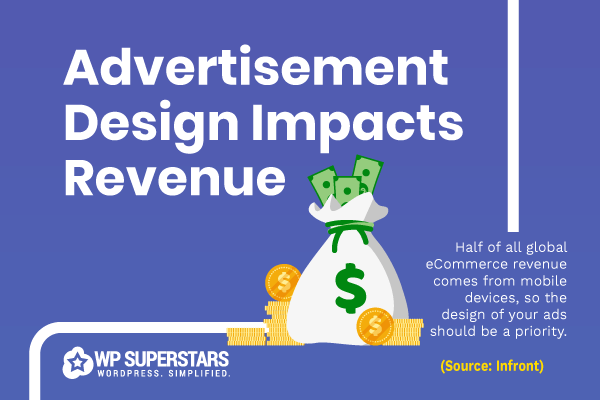
Mobile ads – native, interstitial, video, rewarded video, rich media, and more – can entice people to spend more money in your online store and generate you more cash. Seeing that half of all global eCommerce revenue comes from mobile devices, paying close attention to the type of ads you run and how they’re encouraging people to convert is key.
23. Blog content is rampant, even on WordPress websites
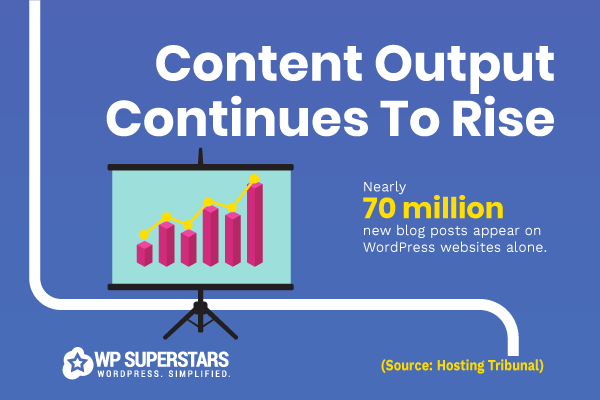
Each month, nearly 70 million new blog posts appear on WordPress websites alone. Attached to those blog posts are around 77 million comments, which means there is lots to discuss. How people decide which content to read is based on a lot more than topic alone. Yes, even web design matters.
24. Color can be psychological
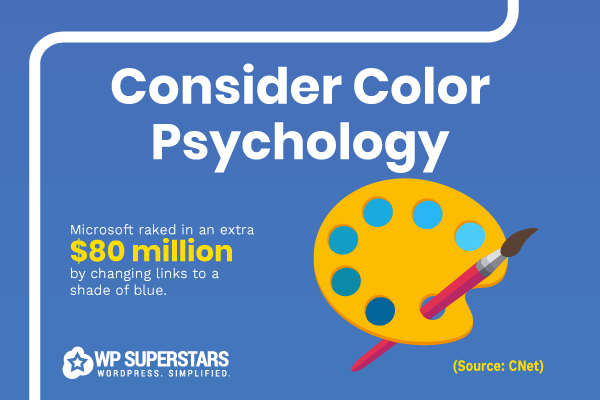
Microsoft’s search engine Bing is just one example of how color can make a long-lasting impact on your site’s success. By changing its links to a shade of blue (that was eerily similar to Google’s shade of blue), Microsoft raked in an impressive $80 million extra bucks.
25. CTA button colors convert
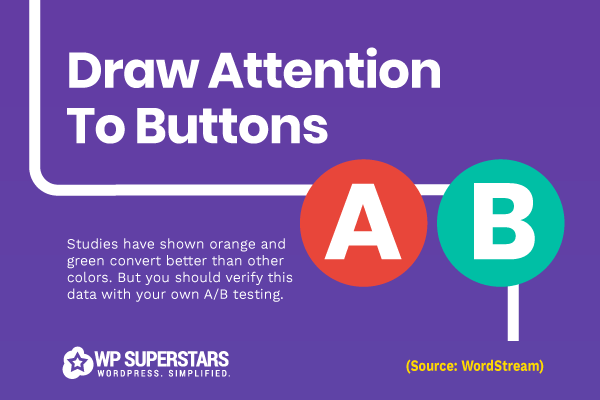
When it comes to your website’s call to action buttons, orange and green convert the best. Just remember, A/B testing your site’s CTA buttons is a must. Just because something works for one (or a majority) of websites doesn’t mean it’ll work for you. Split testing small changes is the most accurate way to find out what your target audience likes the best.
26. The design of your products makes a difference too
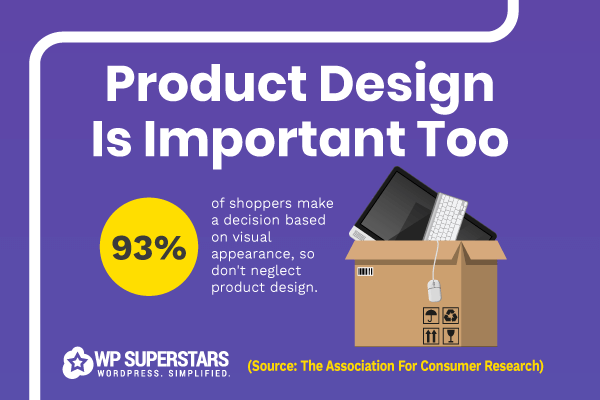
Studies have shown that 1% of people base their buying decisions on smell, 6% base it on texture, and 93% of shoppers make a decision based on visual appearance. Since people can’t physically touch or try out the products you’re selling online, they have to rely on the visual appearance of them in determining whether to buy or not. That means you must have high-quality images for people to check out.
27. Even marketers agree that images are important to web design
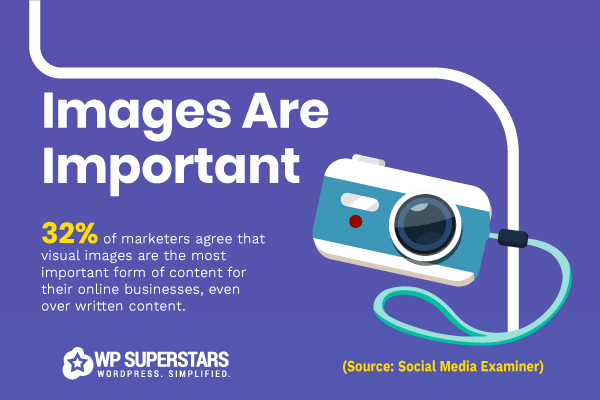
32% of marketers agree that visual images are the most important form of content for their online businesses, even over written content. Only 27% of marketers think that blogging is the most important for their business.
28. Pairing images with written information is the best combo
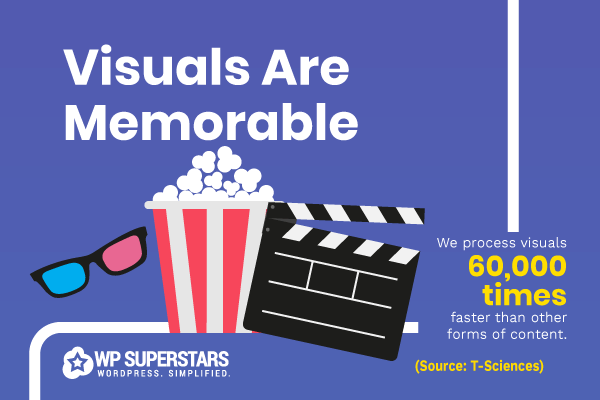
If you read or hear a piece of information, you’ll remember about 10% of it three days later. Add a picture to that information and you’ll remember about 65% of three days later. Remember, people process visuals about 60,000 times faster than any other form of content. And visuals stick better too.
29. Website agencies agree that poor web design is a business killer
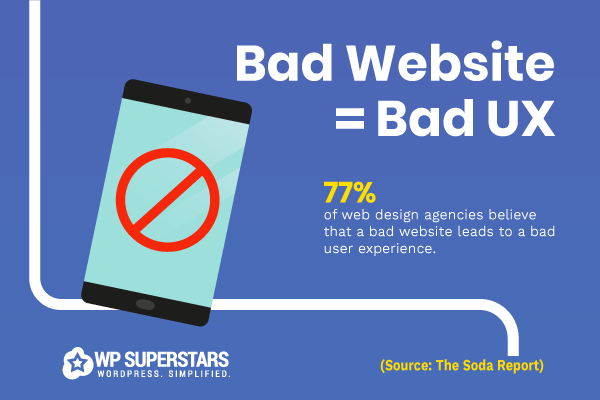
77% of website agencies believe that a bad website leads to a bad user experience. They also contend that this is the biggest weakness they see in their clients and that user experience is directly connected to web design whether you like it or not.
30. Design related feedback reigns supreme
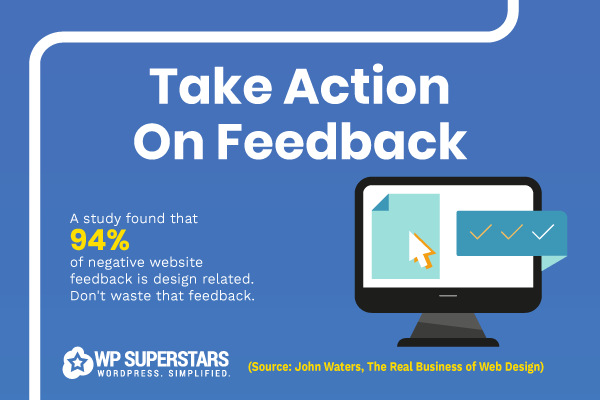
A study found that 94% of negative website feedback is design related. In other words, having a modern, clean, and relevant web design matters to most people when they land on a website. And when people want to complain about something (or offer a suggestion) most of their feedback is about design related things.
Infographic: 30 web design statistics
We’ve wrapped all of these web design statistics up into an infographic that you can publish on your blog.
Note: If you’d like to republish this infographic, save the infographic to your computer, upload to your blog and include a credit link back to this post.

Final thoughts
And there you have it! Some of the best web design related statistics around. When it comes to creating a stand out WordPress website, you have to think about a lot of things.
And web design is one of the big ones. It’s not enough to provide valuable content for site visitors to read or a few neat images for people to view.
You have to take a proactive approach to how you place elements on your website and make sure that you’re accomplishing your goals in the process. But trust us, with a little bit of time and effort, you’ll have a highly converting website that is beautiful to look at too.
